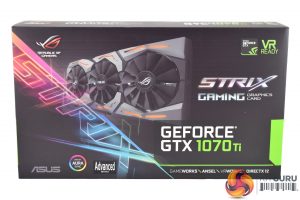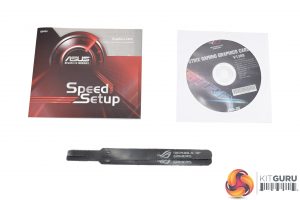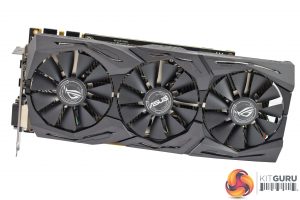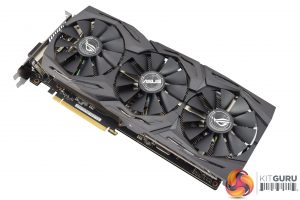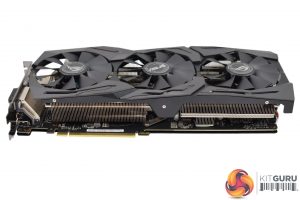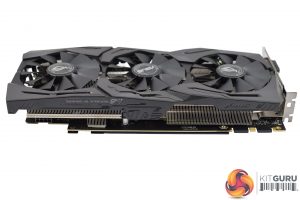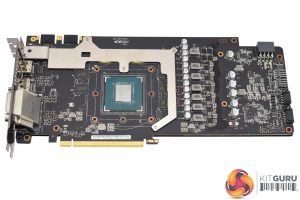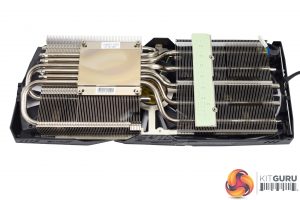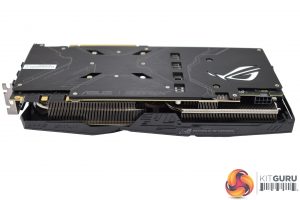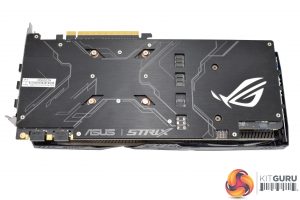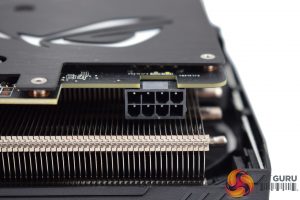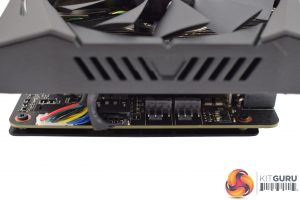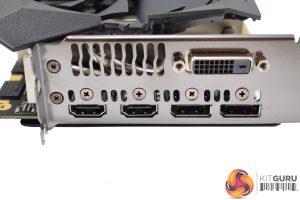If you have bought any other ASUS ROG products, then you will be instantly familiar with the GTX 1070 Ti ROG Strix‘s box – it is mostly dark but with an electric neon Strix logo dashed across the left-hand side.
Inside, the accessories bundle is scarce. Users get 1x driver disc, 1x quick-start guide and 2x cable ties, and that is it.
The graphics card itself is what we're really here for, though, and I think ASUS has absolutely nailed the design. It is nothing new – if you have seen any of our ASUS graphics card reviews over the last year then you will be familiar with the Strix design.
That being said, the matte black aesthetic is lovely, and the triple-fan Wing-Blade configuration should provide good cooling performance.
It is also absolutely massive, measuring 298mm x 134 x 40mm, so it is probably not for the Mini-ITX users out there. Those dimensions also mean the card takes up 2.5 PCIe slots.
Taking the card apart is dead easy – just remove the six spring-loaded screws from the back of the card. The backplate is screwed into the PCB from the underside, though, so you have to actually remove the heatsink if you want to get at the backplate.
In terms of the PCB design, the VRAM cooling plate immediately grabbed my attention – it should just provide extra surface area for the chips' heat to dissipate. The VRM MOSFETs are also provided with a thermal pad to aid cooling.
The Strix's heatsink is a hefty unit, with 6x 6mm nickel-plated heatpipes, and ASUS' ‘MaxContact' mounting plate – precision machined, it is supposedly 10x flatter than other GPU contact areas which obviously aids heat transfer.
Moving on to the backplate, it is a thing of beauty – brushed metal, with a large cut-out for the ROG logo which is one of the RGB lighting zones. The ASUS and Strix logos are also present on the backplate.
Interestingly, the Strix GTX 1070 Ti uses a single 8-pin PCIe power connector – the two aftermarket models we looked at last week, from MSI and Palit, both used 1x 8-pin and 1x 6-pin. Still, the TDP is the same at 180W.
Another Strix feature is the inclusion of 2x 4-pin fan headers on the end of the PCB. These headers control any fans users choose to connect and adjust the fan curve based on the GPU's temperature, instead of the CPU. This should help when gaming, as we know games tax a GPU much more than a CPU, so the increased temperatures should prompt faster-spinning chassis fans.
Lastly, the I/O is worth noting: the Strix card has 2x HDMI 2.0b, 2x DisplayPort 1.4 and 1x DL-DVI outputs.
Be sure to check out our sponsors store EKWB here
 KitGuru KitGuru.net – Tech News | Hardware News | Hardware Reviews | IOS | Mobile | Gaming | Graphics Cards
KitGuru KitGuru.net – Tech News | Hardware News | Hardware Reviews | IOS | Mobile | Gaming | Graphics Cards


